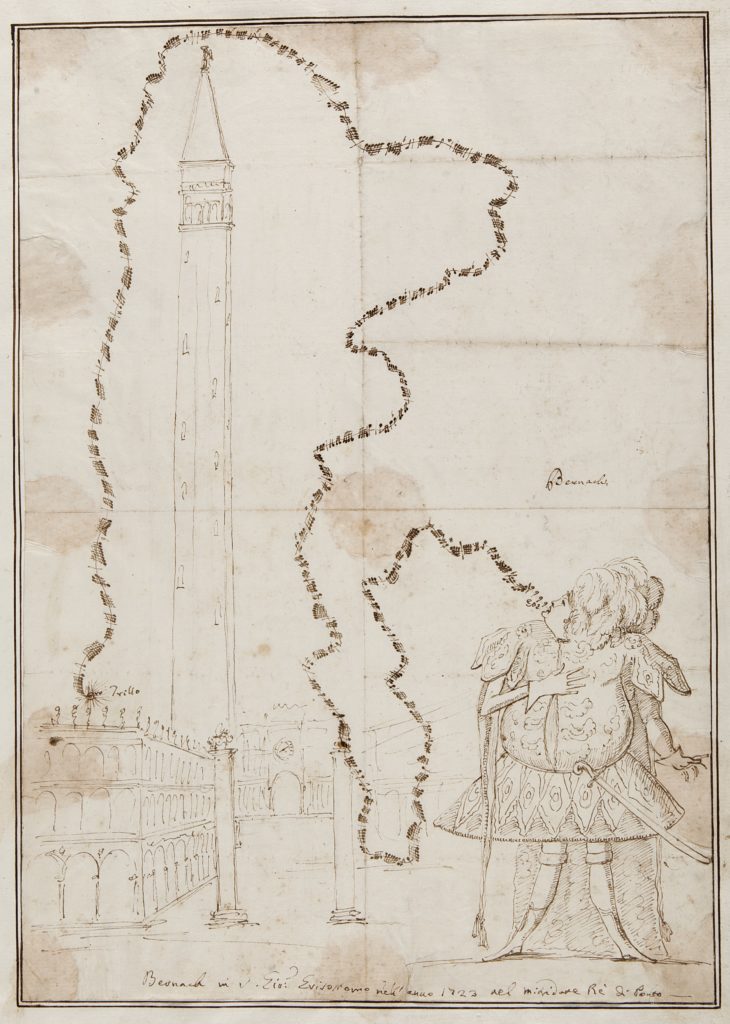
Antonio Maria Zanetti il Vecchio, Il trillo di Antonio Maria Bernacchi, matita e penna ad inchiostro bruno, carta bianca
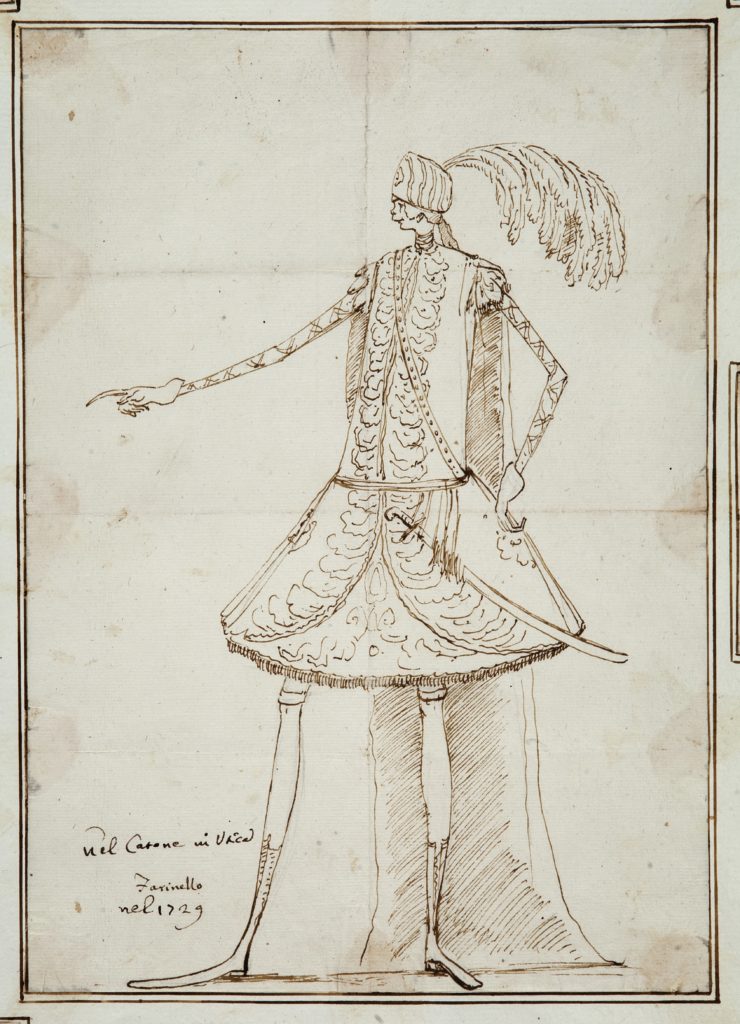
Antonio Maria Zanetti il Vecchio, Caricatura di Carlo Broschi detto Farinelli nel Catone in Utica, matita e penna ad inchiostro bruno, carta bianca
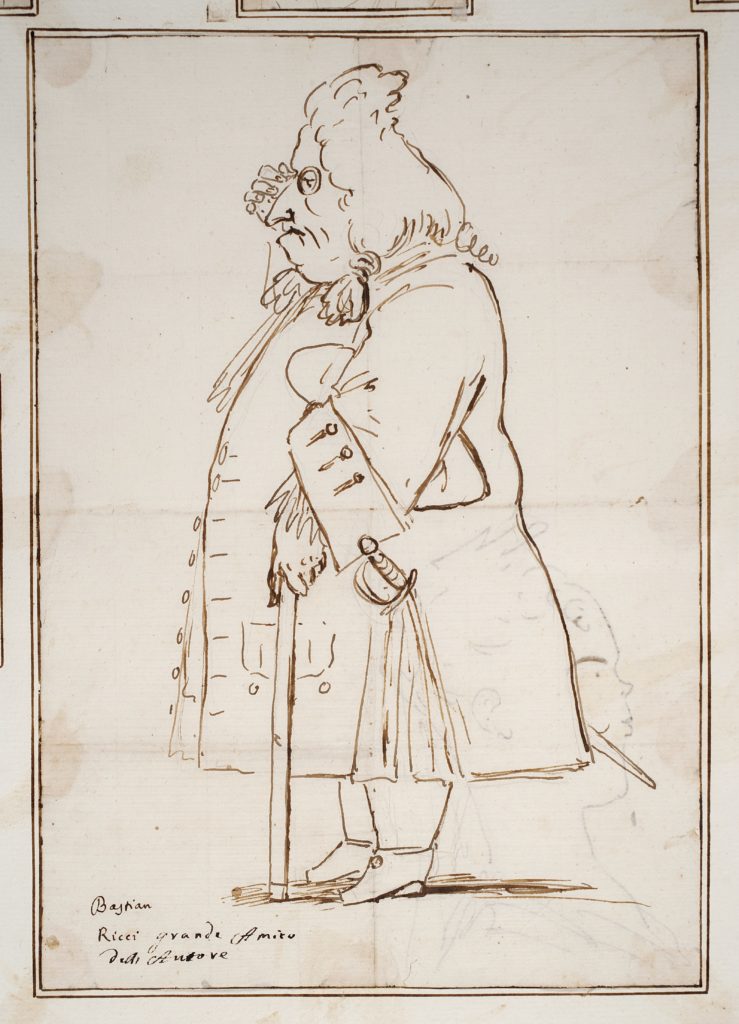
Antonio Maria Zanetti il Vecchio, Caricatura di Sebastiano Ricci ‘amico dell’autore’, matita e penna ad inchiostro bruno, carta bianca
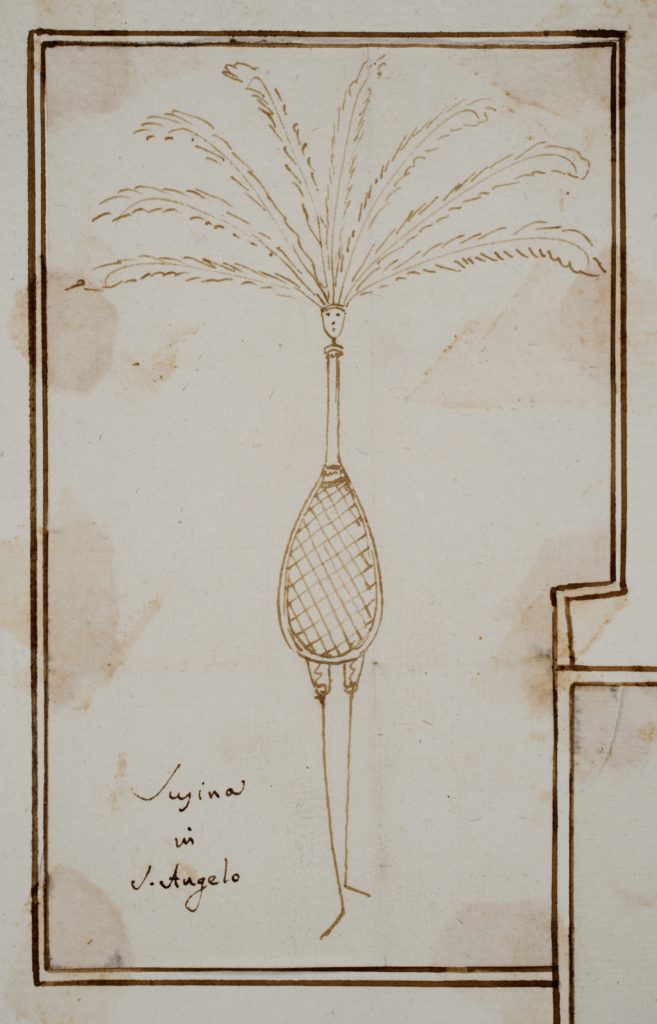
Antonio Maria Zanetti il Vecchio, Susina in Sant’Angelo, matita e penna ad inchiostro bruno, carta bianca
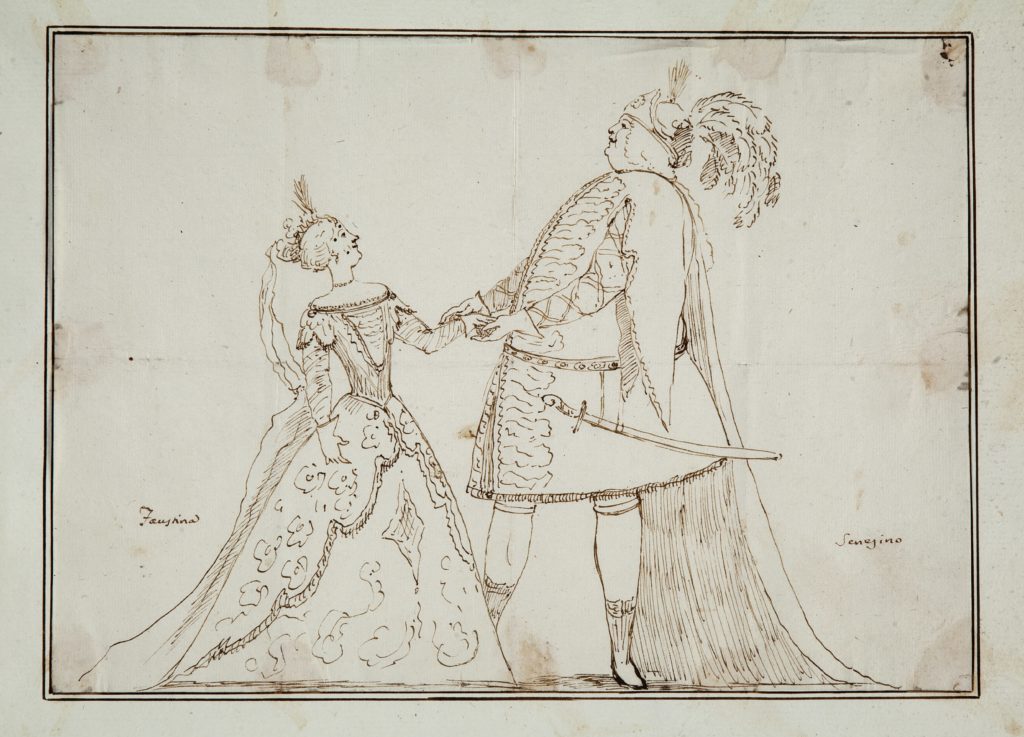
Antonio Maria Zanetti il Vecchio, Faustina Bordoni e Francesco Bernardi detto Senesino, matita e penna ad inchiostro bruno, carta bianca
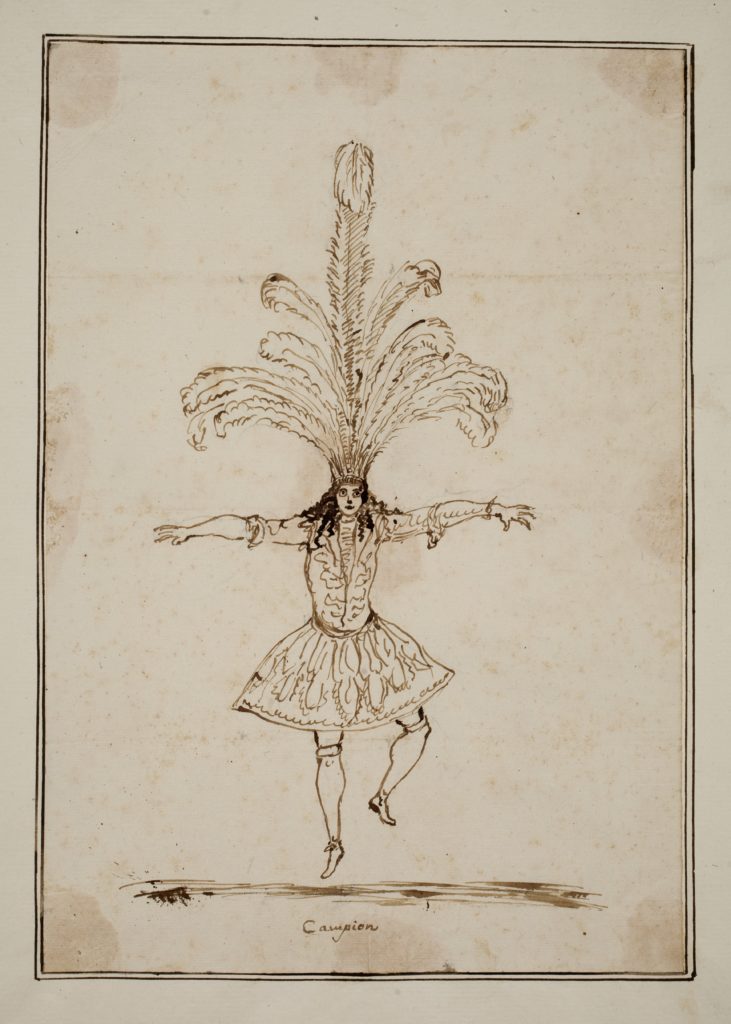
Antonio Maria Zanetti il Vecchio, Caricatura di Giuseppin ballerino, matita e penna ad inchiostro bruno, carta bianca
The Caricatures Album of Antonio Maria Zanetti di Girolamo il Vecchio
Donated to Fondazione Cini in 1968 by Vittorio Cini, the Album of Caricatures by Antonio Maria Zanetti the Elder represents, together with the Windsor specimen, which belonged to Consul Joseph Smith, and the one in the Israel Museum in Jerusalem, already owned by Francesco Algarotti, a fundamental page of eighteenth-century Venetian civilization. Consisting of 77 sheets on which are mounted 350 caricatures (variously dated between the 1920s and the 1950s), product mostly of Zanetti’s hand but also of his painter friend Marco Ricci, it composes an irreverent gallery of “abbots, priests, painter friends (… ), waiters, nurses and gastaldi, and theater people such as singers, dancers, actresses, musicians, prompters, copyists, authors, all that world in short that gravitated and lived on the boom of melodrama” (Bettagno 1969): a comédie humaine in which the psychological and social geography of the cosmopolitan Venetian milieu frequented by the collector, engraver and erudite polygraph is explored under the deforming lens of exaggeration and liberating lazzo. Their pen stigmatizes physical characteristics, flaws, boastfulness of the designated ‘victims,’ revealing the elusive, whimsical, ironic side of the Venetian sensibility.
The gallery of ‘portraits,’ opened by the more courtly and institutional effigy of Antonio Maria Zanetti engraved by Giovanni Antonio Faldoni, unfolds, sheet after sheet, through a skillful montage of individual caricatures that emphasizes the humorous paradigm. In the resulting microcosm, wide is the human range of the protagonists of this satire, sometimes caustic, often good-natured. Nourished is the gallery of singers, portrayed in stage roles: among them the castrtatedi Antonio Maria Bernacchi, Francesco Bernardi known as the Senesino, Andrea Pacini known as the Lucchesino, Nicola Grimaldi and the celebrated Carlo Broschi known as Farinelli, singing stars of Venetian and European musical theater; and among the sopranos there is no shortage of the internationally renowned Venetian Faustina Bordoni, alongside the parade of as many virtuosos of singing, from Margherita Durastanti to Rosa Ongarelli, from Rosaura Mazzanti to Marianna Benti Bulgarelli known as la Romanina, from Anna Maria Mangani to Antonia Negri Tomi known as la Mestrina. Not only singers of melodramas and intermezzos; the icastic pen, which exaggerates, deforms, rewrites somatic features, is also aimed at actors and dancers, priests and matchmakers, members of the aristocracy and ecclesiastics, composers and music masters, masters and servants, Venetians and ‘outsiders’. A special place is reserved for the artists, friends and family members, from Sebastiano Ricci to Rosalba Carriera, from Francesco Fontebasso to Gaspare Diziani. In the representation of the play of the parts, completing the review, there is no shortage of caricatures that the two authors perform of themselves: Zanetti’s ride on a visit to Marco Ricci, an affectionate testimony to their strong bond; the self-portrait, of comic awareness, that Marco Ricci sends to his friend, in which he presents himself in chamber clothes, with the papalina on his head, affected by pains and with his face pockmarked by smallpox signs (on the same page, above, there is a caricature of Antoine Watteau, with the hypothetical effigy of Francesco Pittoni while following the transportation of some paintings to Paris); or, moreover, Zanetti’s iconic self-portrait as he emerges from the coffin in the form of a sneering skeleton, an extreme form of unmasking.
“Zanetti and Marco Ricci’s caricature, characterized by regression to the ‘doodle’ style, is unmasking of characters in their own circle in order to recover them as helpless individualities out of the disguise, of the theatrical emphasis and the process of subtle idealization with which contemporary portraiture (Rosalba Carriera) gratifies them. (…) In this way the caricature spirit operates a leveling down, abolishes social distances” (Mariuz 1986).
In the manuscript with the Index of Books of the Library of Antonio Maria Zanetti by Girolamo il Vecchio (1680-1767), “different caricatures” in folio are mentioned, to be identified precisely with the Cini Album of caricatures.
Gone also the namesake cousin Antonio Maria Zanetti of Alessandro in 1778 and dispersed the rich Zanetti collection – known for the prints by Dürer, Parmigianino, Rembrandt and the famous cameo collection – the sheets, postilled by Bolognese marquis Francesco Albergati Capacelli, were sold, ending up in the hands of the Polish nobleman Aleksander August Zamoyski, perhaps through the mediation of Antonio Zucchi and Angelica Kauffmann, portraitist in Rome of Zamoyski’s father. They later entered the Poniatowski collections, perhaps in the collection of Prince Stanislaus, nephew of Poland’s last ruler, and were subsequently dispersed. To find them in Paris, at the bookseller Galanti, and then in Milan at the bookseller Carlo Alberto Chiesa, was the bibliophile and scholar Tammaro de Marinis, Vittorio Cini’s advisor and agent, who promptly pointed them out to him, thus enabling the album’s reaggregation to the Venetian cultural heritage.
The Cini album was the subject of a research and study supported and financed by the American committee for the preservation of the Venetian cultural heritage Save Venice Inc.; a study that flowed into the catalogue: E. Lucchese, The Album of Anton Maria Zanetti’s Caricatures at Fondazione Giorgio Cini, Venezia 2015.
